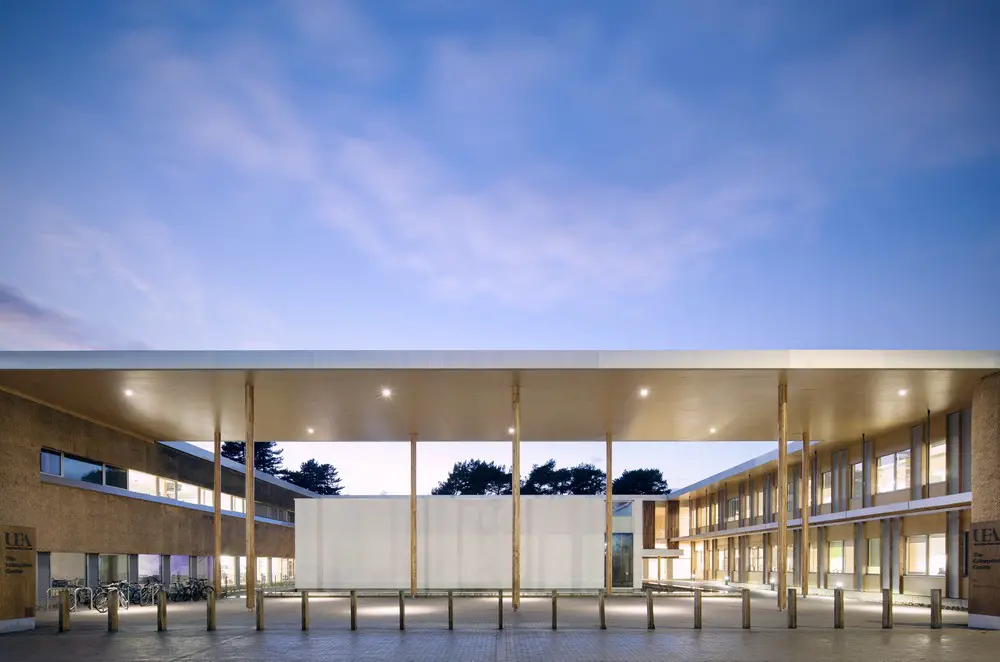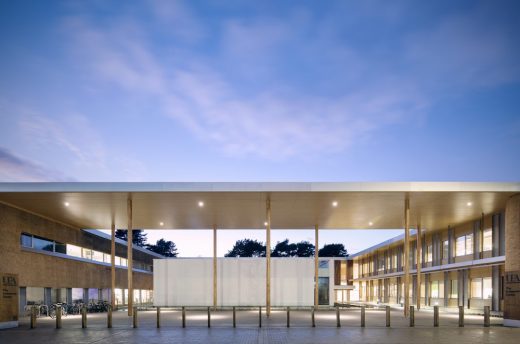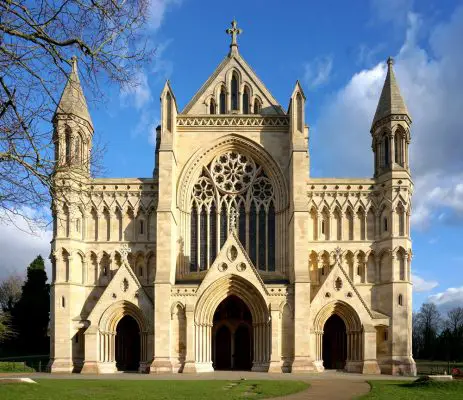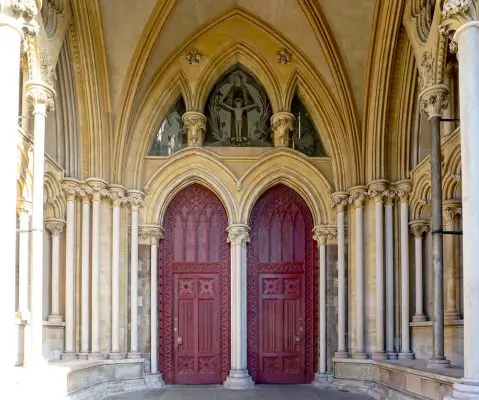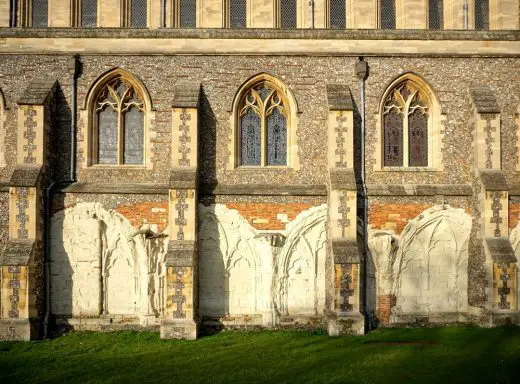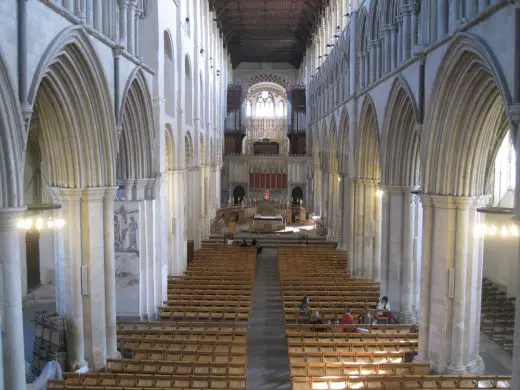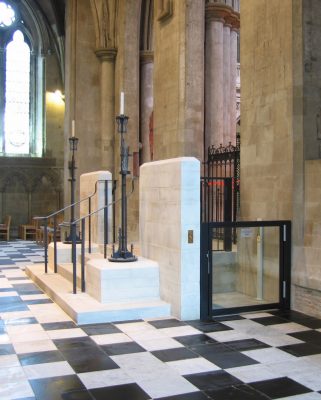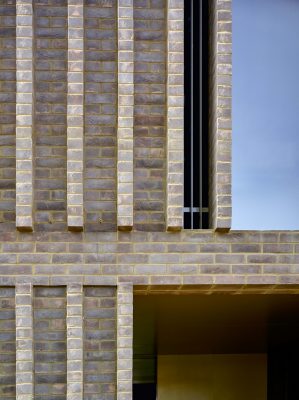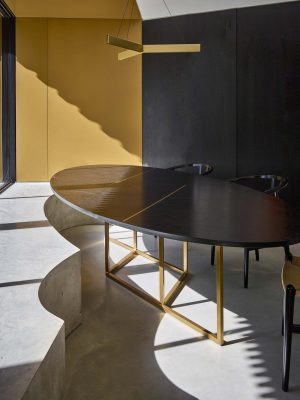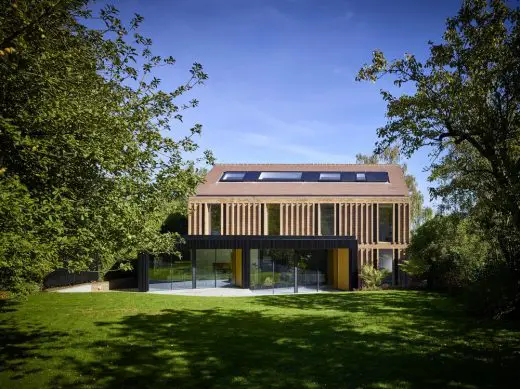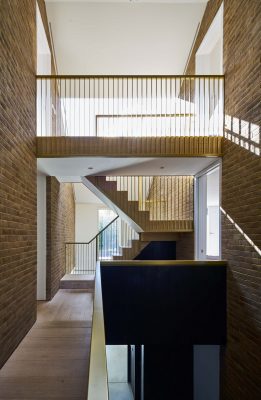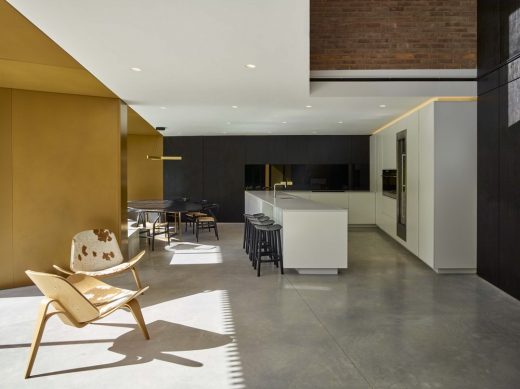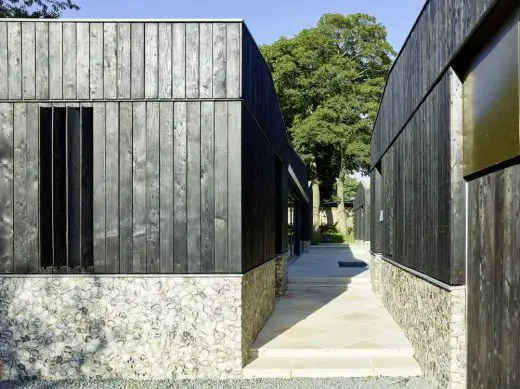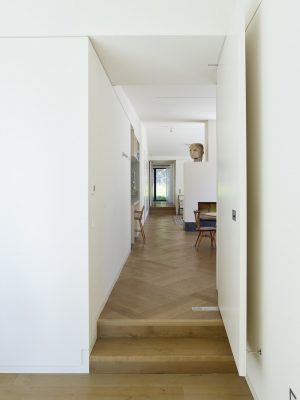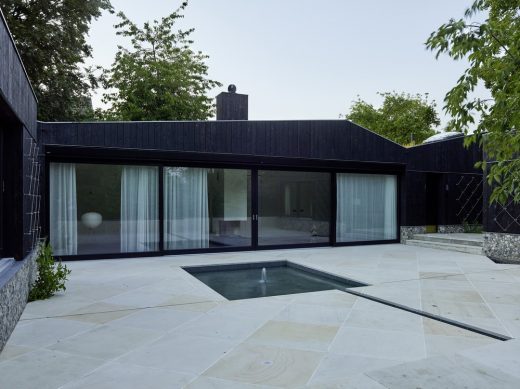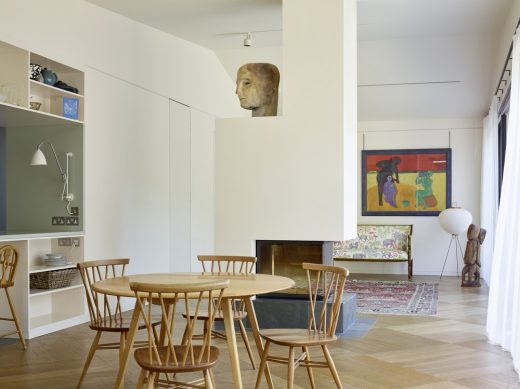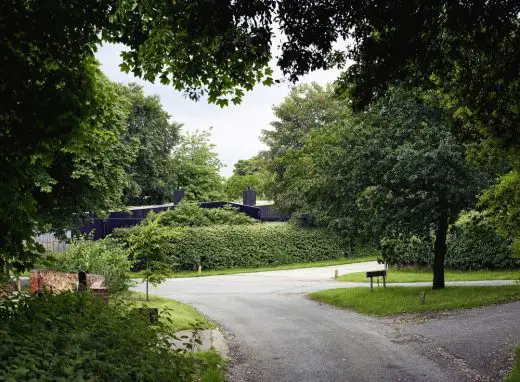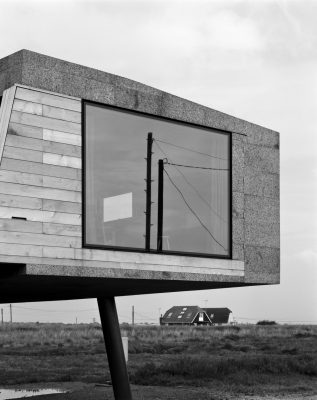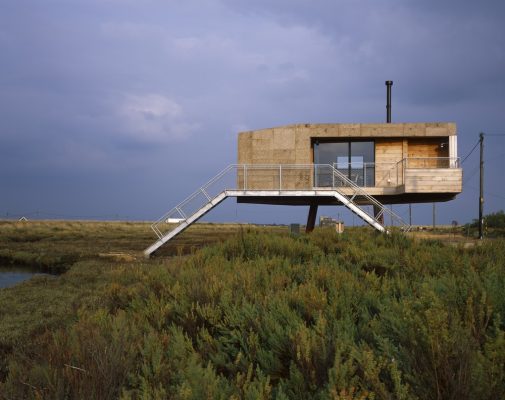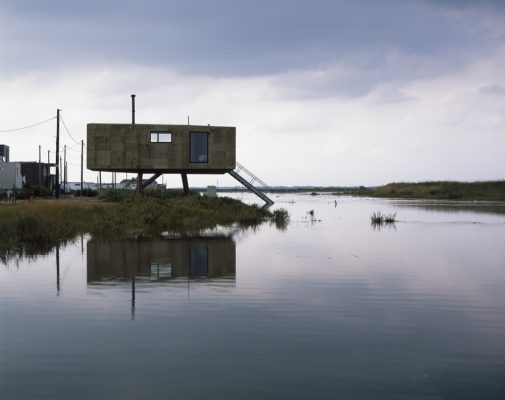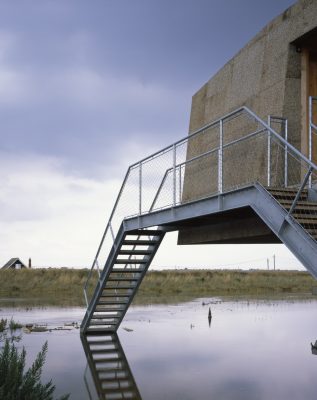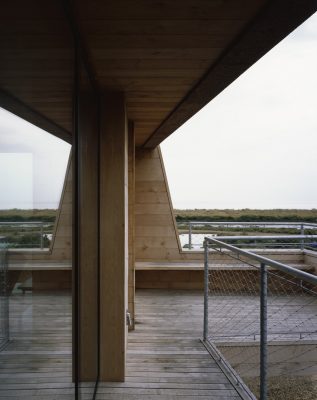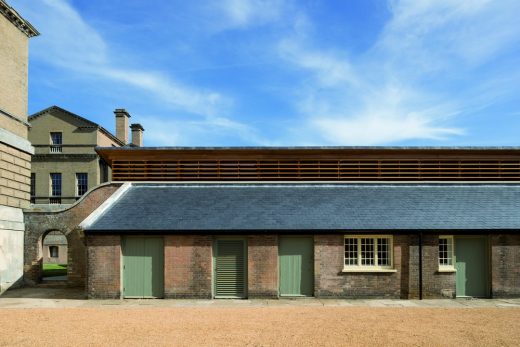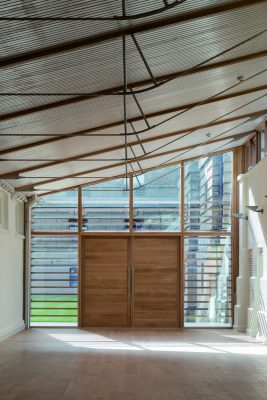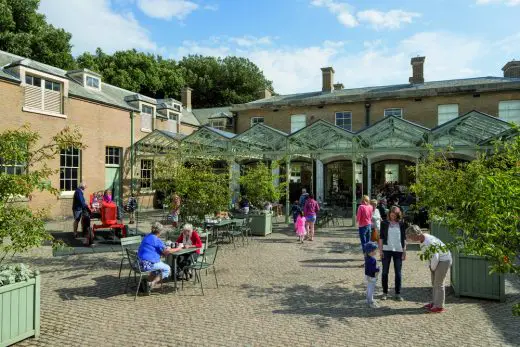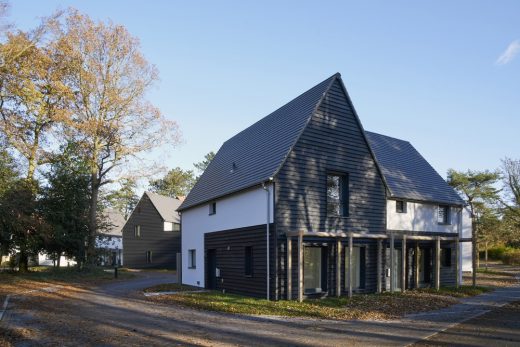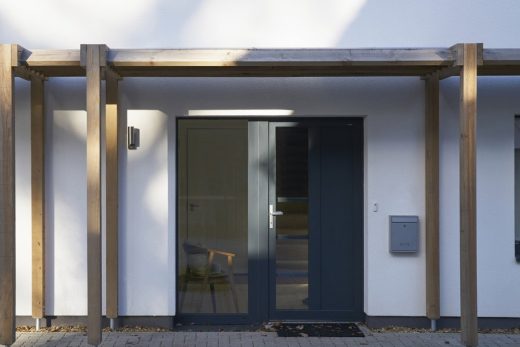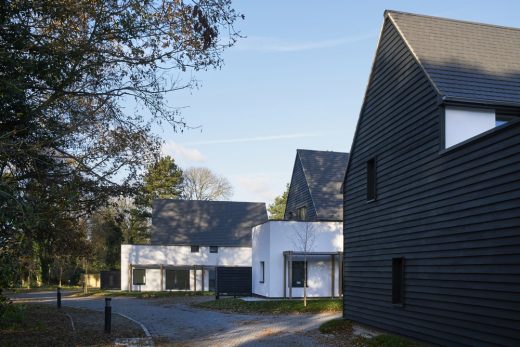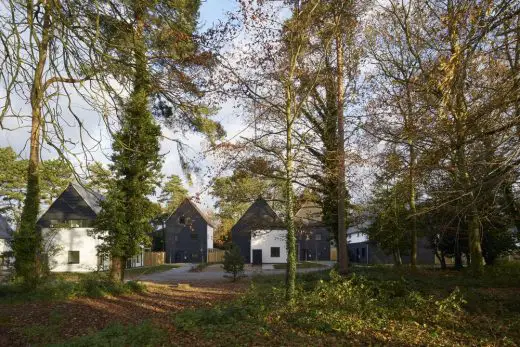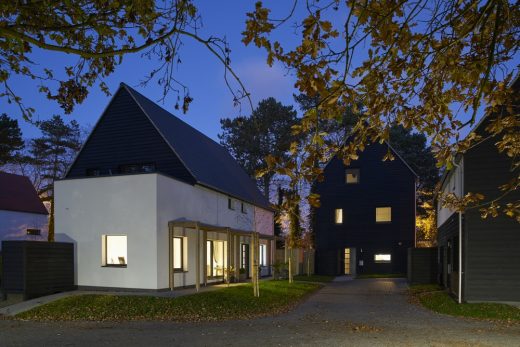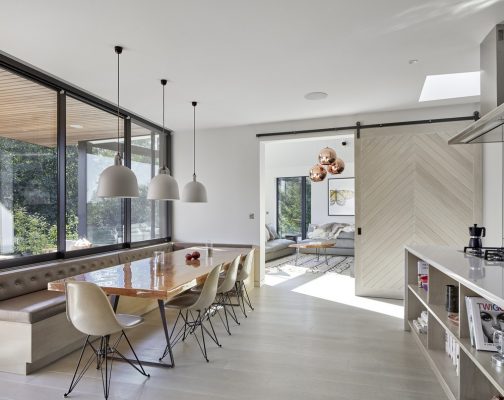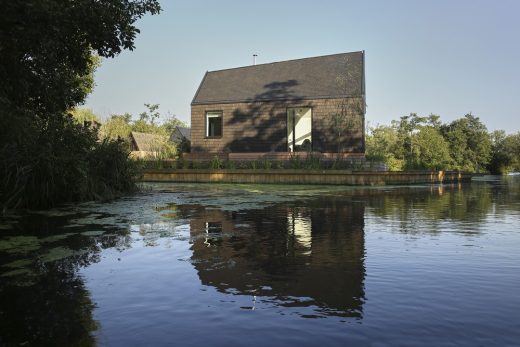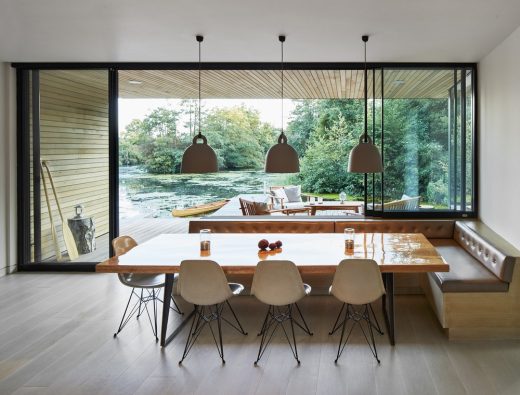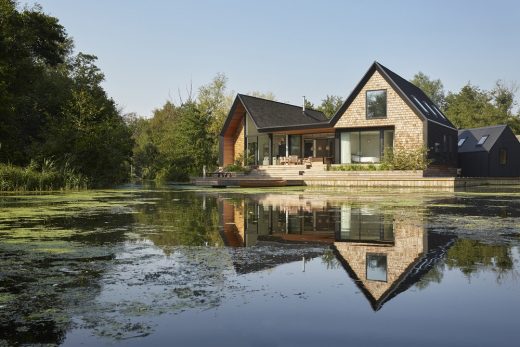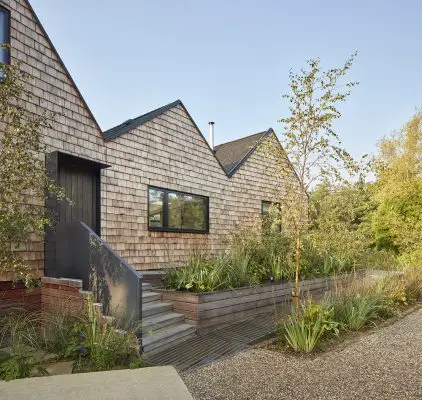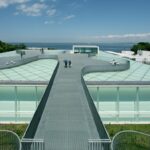RIBA East Awards 2017 Shortlist, Winning Buildings, UK Architecture Links, Projects
RIBA East Awards 2017
Royal Institute of British Architects – British Prize Shortlist buildings + architects
RIBA East Awards 2017 Winners
East of England architecture winners revealed
– More project desciptions with photos being added –
21 + 20 + 19 May 2017
RIBA East Awards Winners in 2017
A Buddhist Retreat Centre in the heart of the Suffolk countryside and a local authority’s first housing development on the outskirts of Norwich are amongst a record seventeen buildings to win one of this year’s RIBA East Awards from the Royal Institute of British Architects, in recognition of their architectural excellence and contribution to society.
The East of England buildings that have won an RIBA East Award 2017 are:
Cambridgeshire
1. University of Cambridge Primary School, Cambridge, by Marks Barfield Architects, London
2. Lode House, Cambridgeshire, by Henry Goss Architects, London
3. Combined Colleges Boathouse, Cambridge, by R H Partnership Architects (RHP), Cambridge
4. Heong Gallery, Downing College, Cambridge, by Caruso St John Architects, London
5. Cowan Court, Churchill College, Cambridge, by 6a architects, London
6. The Welding Institute, Great Abington, by Eric Parry Architects, London
Essex
7. The Echoes, Grays, by Bell Phillips Architects, London
8. Redshank, Essex, by Lisa Shell Architects Ltd with Marcus Taylor, London
Hertfordshire
9. St Albans Abbey, St Albans, by Richard Griffiths Architects, London
10. Modern Detached, Hertfordshire, by Coffey Architects, London
Norfolk
11. Backwater, Norfolk, by Platform 5 Architects, London
12. Carrowbreck Meadow, Norwich, by Hamson Barron Smith, Norwich
13. The Enterprise Centre, University of East Anglia, Norwich, by Architype, London
14. Holkham Hall Stables and Pottery Building, Wells-Next-the-Sea, by Hopkins Architects, London
Suffolk
15. Vajrasana Buddhist Retreat Centre, Suffolk, by Walters & Cohen Architects, London
16. Marsh Hill, Suffolk, by Mole Architects, Cambridge
17. Peacock House, Suffolk, by BHSF Architekten, Zurich with Studio-P, London
From the 17 regional award winners, a number of special awards have also been announced.
The ultimate accolade of RIBA East Building of the Year 2017, sponsored by Marley Eternit, has been awarded to Vajrasana Buddhist Retreat Centre, Suffolk, by Walters & Cohen Architects.
The Enterprise Centre, University of East Anglia, Norwich by Architype picked up two special awards – the RIBA East Sustainability Award sponsored by Geberit, and the clients, Adapt Low Carbon Group & the University of East Anglia, were named the RIBA East Client of the Year, sponsored by Tobermore.
The RIBA East awards jury were unable to split two outstanding conservation projects and so the RIBA East Conservation Award, was awarded to both St Albans Abbey by Richard Griffiths Architects, and Holkham Hall Stables and Pottery Building by Hopkins Architects.
In addition to the Conservation Award, Richard Griffiths also picked up the RIBA East Project Architect of the Year Award, sponsored by Taylor Maxwell, for his work on St Albans Abbey.
Last but not least, the RIBA East Small Project of the Year went to Redshank in Essex, by Lisa Shell Architects Ltd with Marcus Taylor.
The Awards were presented at an awards ceremony at Fitzwilliam College, Cambridge this evening (Thursday 18 May 2017), hosted by Nicolas Tye, RIBA East Regional Chairman, and Awards Jury Chairman Anthony Hudson of Hudson Architects, with keynote speaker Alan Vallance, RIBA Chief Executive.
Speaking today, Louise Todd, RIBA East Regional Director, said:
“We spent five days out on the road visiting the 30 shortlisted schemes and it was just fabulous to see the diversity and exceptional quality of buildings around the region. The jury had a really difficult task in selecting the winners, which says a lot for the strength of the shortlist and the creativity of the architects involved . These buildings all demonstrate that by engaging with an architect, clients can achieve remarkable buildings that improve our communities and enhance people’s lives.”
*******************
RIBA East Awards Winning Building in 2017
RIBA East Awards Winners in more detail
Vajrasana Buddhist Retreat Centre, Suffolk
Design: Walters & Cohen Architects
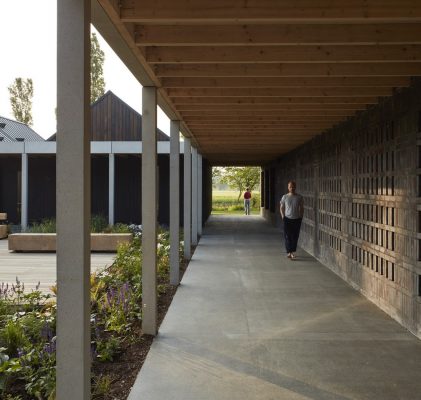
photo © Dennis Gilbert – VIEW
Vajrasana Buddhist Retreat Centre Building in Suffolk
This exquisite building for meditation is found in the midst of the Suffolk countryside. Although predominantly inward facing around courtyards it connects to the landscape beyond with views from shared communal rooms and bedrooms much as a monastic settlement might. It is a perfect setting for a Buddhist Centre.
Design: Marks Barfield Architects
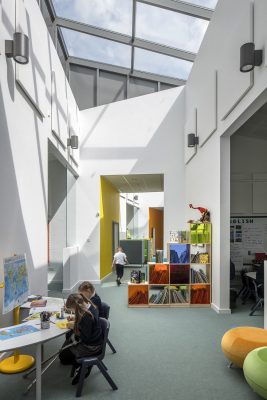
photo © Morley von Sternberg
University of Cambridge Primary School
Considerable research went into the development of this primary school, taking best practice from across the globe on teaching methods since it is also a training school. It is an ambitious project and staff are clearly proud and delighted with the resultant building.
The Welding Institute, Cambridgeshire
Design: Eric Parry Architects
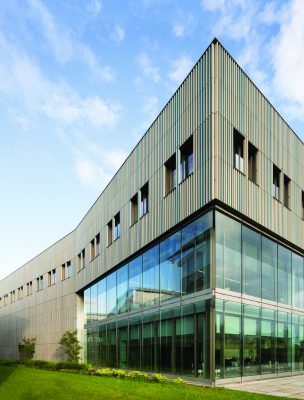
photo © Dirk Lindner
The Welding Institute, Cambridgeshire
The building matches in architectural quality the innovation that goes on inside it -The Welding Institute (TWI) is a world-leading organisation dealing with joining technology at every scale. This is a large building and the scale successfully mediates with its context.
The Enterprise Centre, University of East Anglia, Norwich, Norfolk
Design: Architype Architects
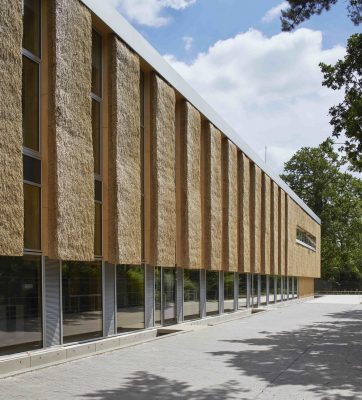
photo © Dennis Gilbert – VIEW
Norwich Research Park Enterprise Centre
This is an ambitious project that set out to be the first Passivhaus office building in the UK, to source low-carbon materials locally and explore the idea of a contemporary vernacular. A lot has been learnt on the way and the learning process has been as important as the end result. It has achieved much of that ambition and is exemplary.
The Echoes, Essex
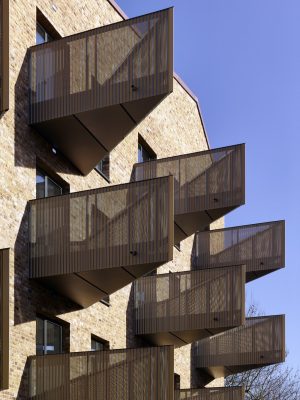
photo © Kilian O’Sullivan – VIEW
Jury Report
It is good to see such a high quality housing scheme sponsored by a local authority. This is Thurrock’s first development in an ambitious new housing programme and the architect was involved from the start in advising on potential sites. Such a close collaboration between architect and local authority has been rewarded with a bold architectural response.
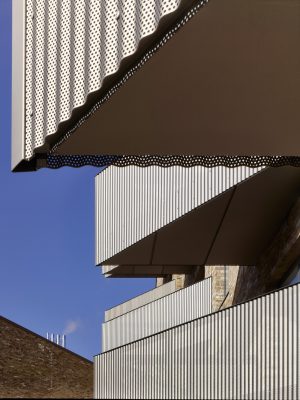
photo © Kilian O’Sullivan – VIEW
The site is triangular and sandwiched between railway track and access road. The layout of the three blocks makes the most of the context by reinforcing the urban form of the street, creating a courtyard at the rear and providing all flats with southerly or westerly views. These are entered off the gated courtyard which is accessed via a ramp and steps that fit neatly between two of the blocks.
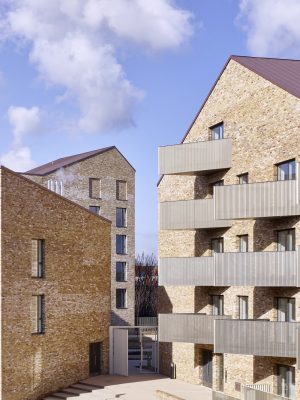
photo © Kilian O’Sullivan – VIEW
The roof profile varies along the length of the street which means that height can be gained without being oppressive to the street below. However the most distinctive feature is the triangular balconies, the majority of which face south with a few having breathtaking views over buildings to the Thames beyond. These work well viewed from the outside and are generous to use, adding a lightness of touch. They relate to living spaces that are on the south side with bedrooms predominantly facing north so all flats are double aspect.
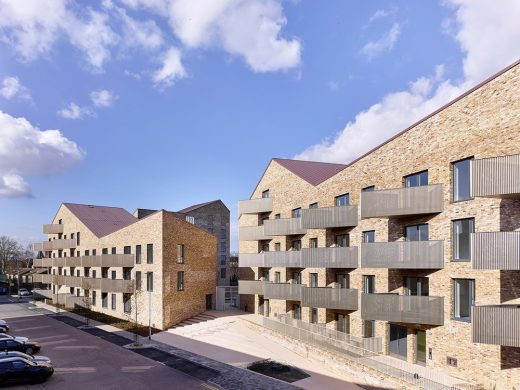
photo © Kilian O’Sullivan – VIEW
The level of brickwork detailing is exceptional and considerable attention has gone into junctions, soffits and jambs to give a robust high quality building. Equally the balconies are cleverly detailed offering some transparency but also concealing day-to-day clutter from the outside.
This is an impressive addition to Thurrock’s housing stock that has met the challenges of an awkward site in a playful and imaginative way.
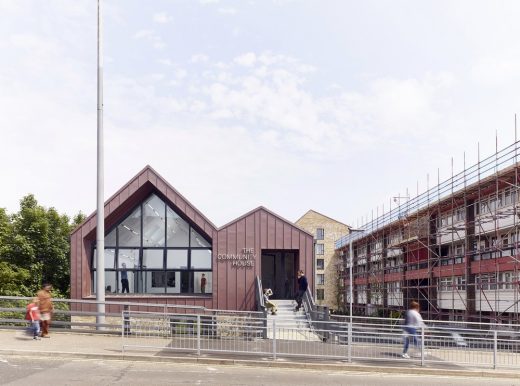
photo © Kilian O’Sullivan – VIEW
Architect practice: Bell Phillips Architects
Date of completion: February 2016
Client company name: Thurrock Council Housing Department
Project city/town: Grays
Contract value: Confidential
Internal area: 5,695.00 m²
Cost per m²: Confidential
Contractor company name: Willmott Dixon
Consultants:
Structural Engineers: Morgan Tucker
Environmental / M&E Engineers: Atkins
Landscape Designer: Anna French Associates
Sustainability/ Code Assessor: Atkins
Arboricultural Impact Assessment: D F Clark Bionomique
Awards: RIBA East Award
St Albans Cathedral and Abbey Church Building Renewal, Hertfordshire
Jury Report
Richard Griffiths’ work at St Albans Cathedral and Abbey Church covers a wide range of conservation projects from repair to small scale interventions. He has provided a guiding hand on the direction of this work over a considerable time in an intelligent and sensitive way that has avoided pitfalls of excessive and damaging restoration as well as suspect reconstruction. From discussions with the client it is obvious that this guiding hand has been much appreciated and his work highly regarded.
The conservation work has included preserving the deteriorating medieval clunch masonry of the original cloisters and the cleaning, conserving and lighting of the 13th Century west porches. He has overseen the conservation of medieval wall paintings as well as exposing the glories of the Lady Chapel which were concealed under layers of grime built up over a hundred years.
Improvements have been made for better access throughout the building. These interventions are all discrete, particularly at the western entrance where new ramps lead up to the porches. Inside it has been a challenge because of the multiple levels consisting of a total of twenty-two steps in various locations but ramps and lifts have been successfully integrated. The layout of the nave has been altered to allow for better liturgy that includes new furniture, raised platforms and creating a processional route between nave and choir.
All these are reversible and furniture can be cleverly stacked away to allow the flexibility in use that the Cathedral requires. To suit new requirements the choir stalls have been extended. On first impression this looks invisible yet there are clues designed in that allow a reading of the original format.
As a body of restoration, repair and sensitive small interventions with an intelligent overseeing approach, this is exemplary conservation work.
Architect practice: Richard Griffiths Architects
Date of completion: October 2016
Client company name: The Cathedral and Abbey Church of St Alban
Project city/town: St Albans
Contract value: £3,400,000.00
Internal area: 3,500.00 m²
Cost per m²: £971.43 / m²
Contractor company name: Bakers of Danbury
Awards: RIBA East Award ; RIBA East Conservation Award ; RIBA East Project Architect of the Year
Design: Henry Goss Architects
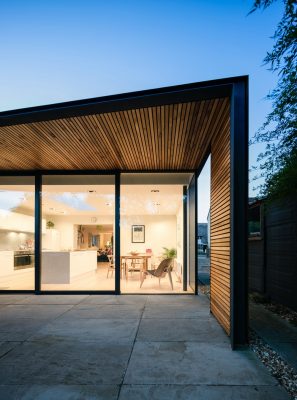
photo © Henry Goss
Lode House, Cambridgeshire
This is a small but exquisitely detailed addition to a house providing the owners with an extended internal living room and generous covered external living space.
Marsh Hill, Aldeburgh, Suffolk
Design: Mole Architects
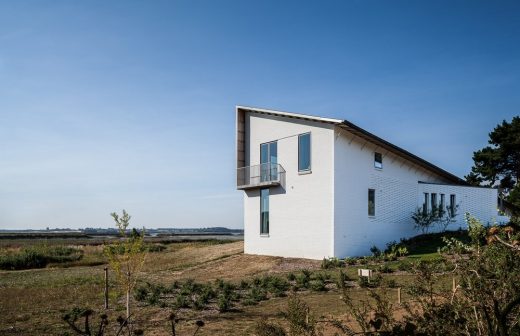
photos © David Butler
Marsh Hill, Suffolk
This is a contemporary house making a bold architectural statement on a sensitive site overlooking the River Alde estuary in Suffolk.
Modern Detached, Hertfordshire
Jury Report
This house shows that good modern architecture can sit comfortably and modestly in a suburban street through a contemporary reinterpretation of neighbouring forms and details. Internally, and in contrast, the house displays flamboyance in its open living spaces and stair hall.
Externally the brickwork harks back to the Arts and Crafts tradition prevalent in the area, with blind arcade brick detailing and windows symmetrically placed. As a counterpoint, in form and material, black charred timber clads the outside of the staircase, conceals the necessary garage and, returning along the flank wall, wraps around the single storey rear extension that engages with the garden. This is cleverly handled and pulls together what might have been discordant parts of the building.
On entering the house the stair hall reveals the full height of the building in a dramatic but controlled way through use of black stained oak panelling that gives way to exposed brickwork: all reflecting themes on the exterior. The hall leads to the open plan living area – the most idiosyncratic space of the house. It is orientated at an angle to the garden to make most of solar orientation and has a scalloped cast concrete bench to the dining table adjacent the kitchen with a sitting area beyond focussed on a fireplace.
There is a rich play both of volumes and materials with a vertical visual connection to the main staircase emphasising that this is a shared family space. The material palette is concrete, oak panelling, bronze metal panels and brickwork at the higher levels. This could have been excessive but it works. In contrast the remaining accommodation consists of straightforward rectangular plastered rooms.
Overall the project has been well considered and hopefully will inspire others, locally and further afield, to explore different ways of approaching the suburban house.
Architect practice: Coffey Architects
Date of completion: January 2016
Client: Private Client
Project city/town: Harpenden
Contract value: Confidential
Internal area: 350.00 m²
Cost per m²: Confidential
Contractor company name: Conamar Building Services Ltd.
Consultants:
Structural Engineers: Morph Structures
Quantity Surveyor / Cost Consultant: Stockdale
Awards: RIBA East Award
Peacock House, Aldeburgh, Suffolk
Jury Report
This is a house that, with an opaque outside, conceals a series of wonderful internal and external spaces that are delightful and extraordinarily consistent in their detailing.
The house, in the suburbs of Aldeburgh, is in a wooded area surrounded by other properties without any particular outlook. It is therefore entirely appropriate for it to be inward looking around a courtyard. The arrangement of three building blocks is extremely simple, consisting of main living spaces, study and a studio. These all have consistent and immaculate detailing using a restrained set of materials.
On arrival very little is revealed other than the horizontal layering of materials consisting of a flint base and timber panelled middle, visually separated from a similarly panelled upper roofscape by a simple flashing detail. Occasionally a panel of brass enhances this composition. These datum levels serve as a constant reference point, help create vistas and play with perspective against terraces and floors that rise over the depth of the site. This is most effective on entering the courtyard which then reveals the house as a whole. This theme runs consistently around the whole house and is replicated internally with a hanging rail within the plastered finishes.
The plan looks rigorous, yet because of the subtleties in different floor levels and roofscape the rooms all have an individual and particular feel. The main living space is generous, opening out through large sliding glazed doors onto the courtyard, being a living space in its own right. There is a nice play of serviced spaces against living spaces keeping the latter concealed as well as movement from one building to another. Intimacy of use has been achieved by keeping guest rooms at the edges of the plan allowing the bathroom, for example, to open up to the garden. The interior finishes are mostly plastered with the hanging rail creating the datum line around the house, off which is hung the owner’s collection of art. An easily accessible art store allows the collection to be inter-changed as required.
Particular attention has been given to the overall layout and roofscape to avoid disrupting views from neighbouring properties and the sedum roofs add to the overall calmness and subtlety of the project.
The house is an accomplished work of architecture, whose overall simplicity in plan, elevation and detail belies an intriguing complexity in both internal and external spaces.
Architect practice: BHSF Architekten with Studio-P
Date of completion: December 2016
Client: Jila and Andrew Peacock
Project city/town: Aldeburgh
Contract value: £948,597.00
Internal area: 264.00 m²
Cost per m²: £3,593.17 / m²
Contractor company name: Builders by Design
Consultants:
Structural Engineers: Constant Structural Design
Quantity Surveyor / Cost Consultant: Andrew Morton Associates Ltd
Awards: RIBA East Award
Redshank, St Osyth, Essex
Jury Report
The building is an extraordinary structure, like other extraordinary structures on this part of the Essex coast, which hovers over the reclaimed marshland. It is a small, beautifully detailed and conceived house that has dealt with the considerable challenges presented by the site in a seemingly effortless way.
On approaching the house it is like being in contact with a Maunsell Fort. The steel tripod structure holds the house pod in the air whilst cleverly concealing all the service connections of power, water and sewage. This allows nature to reclaim the ground below back to marsh. A galvanised steel staircase abuts the structure giving access to the house as though one or other has temporarily docked.
The house enclosure is formed in CLT. This is well crafted and detailed and left exposed on the interior. Being externally insulated in cork might at first be a surprise but it is all part of the innovation and integrated design that has gone into the project. The cork clads walls, roof and underside, reinforcing in a slightly different way the idea of a floating object. An external balcony with built-in seating is in oak and this visually invades the cork cladding thereby making the composition work as a whole. Nesting and bat boxes have also been cleverly incorporated.
Internally there are only three rooms, living, bedroom and bathroom, but each is immaculately detailed making the most of the CLT structure. Each window is proportioned according to the importance of the view and function: from the large sea facing window Maunsell forts and wind turbines can be seen, the kitchen window frames views of the approach and doors onto access deck overlook the marsh and estuary. A secret CLT sliding door opens onto the west-facing balcony for passing through of food and drink.
All the elements of the building are integrated into a whole that is a great deal more than sum of those parts. It is a pleasure and a surprise to see this exceptional house in this marshland landscape.
Architect practice: Lisa Shell Architects Ltd with Marcus Taylor
Date of completion: August 2016
Client company name: Make Some Space Ltd
Project city/town: St Osyth
Contract value: Confidential
Internal area: 49.00 m²
Cost per m²: Confidential
Contractor company name: Macmillan and Wright Ltd/ MWL Group Ltd
Consultants:
Structural Engineers: Elliot Wood
Planning Consultants: Phillips Planning Services Ltd
Environmental / M&E Engineers: Carbon Plan Ltd
Awards: RIBA East Award ; RIBA East Small Project of the Year
Holkham Hall Stables and Pottery Building, Wells-Next-the-Sea, Norfolk
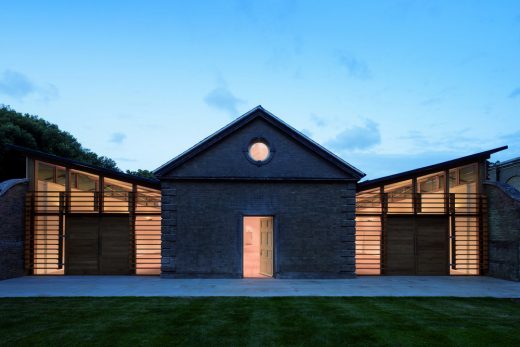
photos © Martine Hamilton Knight
Jury Report
Two separate buildings at Holkham Hall form part of this submission. The stables building has been rearranged and improved to provide an exhibition space, new shop and expanded cafeteria and is well handled. However, the most significant interventions have been made on the pottery building where various disjointed spaces have cleverly been brought together to form one large light filled venue space for weddings, banquets and conferences.
What was originally a bowling alley and then became the pottery consisted of a long rectangular building. This was separated from outbuildings by courtyards on both sides. The new building now encompasses the two courtyards and brings the outbuildings into use as service areas (kitchens and store rooms). The boldest move has been to remove most of the flank walls to the bowling alley and replace with a new open colonnade connecting the central space to the adjacent courtyards so creating a large open area. The design was accomplished using precast concrete columns and beams with a new string bow roof structure over the courtyards. This is sympathetic to the original steel trusses of the bowling alley. Light is brought in at a new clerestory above the outer courtyard wall giving an even wash over the new space.
Overall the detail is of a high standard and the conversion is a clever and bold reuse of the existing buildings, giving Holkham Hall another venue of which it can be truly proud.
Architect practice: Hopkins Architects
Date of completion: October 2016
Client company name: Holkham Estate Office
Project city/town: Wells-Next-the-Sea
Contract value: £4,000,000.00
Internal area: 3,187.00 m²
Cost per m²: £1,255.10 / m²
Contractor company name: RobSon Construction Ltd
Consultants:
Environmental / M&E Engineers: KJ Tait
Catering: Keith Winton Design
Quantity Surveyor / Cost Consultant: MAC Cost Consulting
Museum Consultant: Drinkall Dean
Heritage Consultant: Great Yarmouth Preservation Trust
Structural / Civil Engineers: Smith and Wallwork
Awards: RIBA East Award ; RIBA East Conservation Award
Heong Gallery, Downing College, Cambridge
Design: Caruso St John Architects
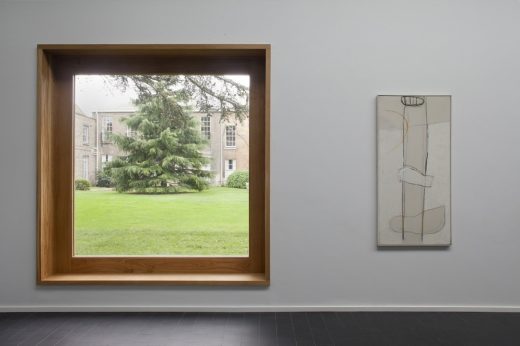
photos © Ioana Marinescu
Heong Gallery, Downing College
An unloved area of Downing College consisting of unremarkable buildings has been transformed into an understated but elegant gallery with a well-detailed forecourt.
Design: 6a architects
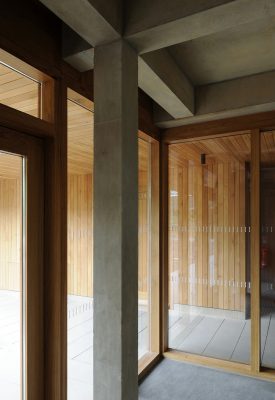
photo © David Grandorge
Cowan Court Building
This new hall of residence captures much of the ethos behind the original design for Churchill College but gives us a bold and extremely well thought through contemporary interpretation of it.
Design: RH Partnership Architects
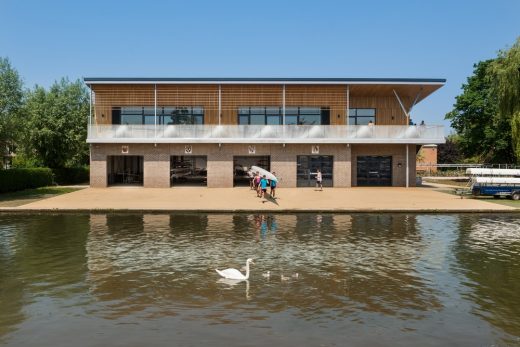
photo © Andrew Hatfield
Combined Colleges Boathouse, Cambridge
An incredibly simple brief for a boathouse has resulted in a commendably straightforward building designed and executed in an elegant and beautiful way.
Four bays of the building provide storage for rowing boats for four colleges and a fifth bay acts as a workshop. The ground level is encased by brick and designed to deal with flooding. This is surmounted by a lighter weight structure clad in oak panelling that accommodates changing and fitness rooms that overlook a generous terrace.
Carrowbreck Meadow
Jury Report
This project for fourteen Passivhaus homes is applauded for setting a new benchmark for local authority housing in the region. It combines a mixed but blind tenure scheme, with 43% affordable housing and passivhaus certification together with a layout and design that is above the usual expectation. It has also considered biodiversity carefully and provides woodland paths and an animal haven.
Houses either face onto the road or are in groups of three, with two storeyed pitched roof buildings flanking one of three storeys, providing a good sense of place. Forms are simple but are given variety with single storey projections providing first floor terraces to bedrooms. A simple palette of materials of render and timber boarding is used but applied in different formats thereby giving a variety of external treatment. Timber pergolas provide shading on the southern elevations and further enhance this aesthetic. It is an approach that creates a clear identity for the scheme without fussiness.
Internally houses have good natural light and attention has been given to views out with low cilled windows in living rooms. Resident feedback has been very positive regarding both the use of the homes and significantly reduced energy bills. Energy use is being monitored and it appears all expectations are being met. Considerable attention was given to construction techniques and a clay block system was adopted which gives the houses added thermal and acoustic efficiencies with a design life of one hundred and fifty years plus.
This is an ambitious scheme for local authority sponsored housing and is an exemplar for more local authorities and developers to follow.
RIBA region: East
Architect practice: Hamson Barron Smith
Date of completion: October 2016
Client company name: Broadland Growth Ltd
Project city/town: Greater Norwich
Contract value: Confidential
Internal area: 1,548.30 m²
Cost per m²: Confidential
Contractor company name: R G Carter Construction Ltd
Consultants:
Structural Engineers: Hamson Barron Smith
Environmental / M&E Engineers: NPS
Quantity Surveyor / Cost Consultant: NPS
Project Management: NPS
Landscape Architects: Hamson Barron Smith Landscape
Planning: NPS
CDMC: NPS
Awards: RIBA East Award
Backwater, Wroxham, Norfolk
Jury Report
The house is found down a long winding track that penetrates deep into the Norfolk Broads at Wroxham. In the tradition of many houses on the edge of the Broads waterways it is low scale and bungalow-like with terraces overlooking the water. This house does it with aplomb.
From the entrance front it appears as three gabled bays harking to the roof forms of adjacent boat sheds. It is quite modest in appearance whereas the waterside elevations open up to the sun and views in a spectacular way. The three bays reflect the internal organisation of the house: living space with study tucked behind, kitchen and dining area occupying the central bay and in the final bay, bedroom accommodation. Each bay is angled and exploits the numerous vistas that surround the site in an effortless but enchanting ensemble, with windows that are well placed and proportioned to their outlook. The relaxed and calm way that all the spaces of the building relate to each is the secret to the house’s success. It can be opened up as free flowing space or closed down as individual rooms to suit the particular demands of day, family or visitors.
Externally the forms of the roof result from the trapezoid plan shape and are well handled, with only two of the gables appearing on the waterside. This gives the house a very different feeling front and back with deep roof overhangs over terraces. Cedar shingles are used throughout but with a subtle distinction between the walls, that are untreated and will weather, to those on the roof which are stained black that also helps to further emphasise the recessive elements of the house.
There is interesting complexity in the shape, form and layout but it feels effortless in its realisation. This house is a delight.
Architect practice: Platform 5 Architects
Date of completion: May 2016
Client: Claire Michell
Project city/town: Wroxham
Contract value: Confidential
Internal area: 165.00 m²
Cost per m²: Confidential
Contractor company name: Wroxham Builders Ltd
Consultants:
Structural Engineer: Morph Structures
Services Engineer: P3r Engineers
Quantity Surveyor / Cost Consultant: Richard Utting Associates
Party Wall Surveyor: David Bullen Ltd
Planting Designer : Thomas Hoblyn Landscape and Garden Design
Awards: RIBA East Award
24 Mar 2017
RIBA East Awards in 2017
RIBA East Awards Shortlist in 2017
RIBA East today announced that it has shortlisted 31 projects for this year’s Royal Institute of British Architects (RIBA) Regional Awards, the most ever to reach the second stage of judging. Amongst the shortlist is a drawing studio on stilts, the conversion of a derelict windmill into a holiday home, and a number of new housing schemes, all in the running after being shortlisted from a record number of 62 entries.
The buildings that have been shortlisted are:
Cambridgeshire
.Alconbury Weald Club, Huntingdon by Allford Hall Monaghan Morris (AHMM)
.Anglia Ruskin University Young Street Campus, Cambridge by Richard Murphy Architects
.Aura, Great Kneighton by TateHindle
.Combined Colleges Boathouse by R H Partnership Architects
.Cowan Court, Cambridge by 6a architects
.Heong Gallery, Downing College by Caruso St John Architects
.James Dyson Building, University of Cambridge by Nicholas Hare Architects
.Lode House, Lode by Henry Goss Architects
.The Welding Institute, Cambridge by Eric Parry Architects
.University of Cambridge Primary School by Marks Barfield Architects
Essex
.Bracelet Close, Thurrock by Bell Phillips Architects
.Redshank by Lisa Shell Architects with Marcus Taylor
.The Echoes, Grays by Bell Phillips Architects
Hertfordshire
.Bishop’s Stortford College Wynch Cottage, by Hawkins\Brown
.Clock House Gardens Welwyn, by Stockwool
.Modern Detached by Coffey Architects
.St Albans Abbey by Richard Griffiths Architects
Norfolk
.Backwater, Wroxham by Platform 5 Architects
.Carrowbreck Meadow Passivhaus homes Norwich by Hamson Barron Smith
.Holkham Hall Stables and Pottery Building Wells-next-the-Sea, by Hopkins Architects
.Play Barn, Fakenham by Adam Khan Architects
.The Abbey Experience, Wymondham by Freeland Rees Roberts
.The Enterprise Centre, University of East Anglia Norwich, by Architype
.The Great Hospital, Norwich by Cowper Griffith Architects
.Westering House, North Norfolk by Cowper Griffith Architects
Suffolk
.Marsh Hill, Aldeburgh by Mole Architects
.Peacock House, Aldeburgh by BHSF Architekten with Studio-P
.The Windmill, Cockfield by Beech Architects
.Thomas Gainsborough School, Great Cornard by Feilden Clegg Bradley Studios
.Vajrasana Buddhist Retreat, Walsham le Willows by Walters & Cohen Architects
Nicolas Tye, Chairman of RIBA East, and past RIBA Awards judge, welcomed the news:
“We’ve had an amazing response to the call for Award entries this year and it’s really great to see clients pushing for good design across such a broad spectrum, from schools and religious buildings through to housing schemes and one-off homes. All the architecture practices and their clients are to be congratulated for getting this far. The jury has a difficult task on its hands.”
All shortlisted buildings will be assessed by a visiting jury during April, with the RIBA East regional award winners being announced during the evening of Thursday 18 May at a celebratory event at Fitzwilliam College, Cambridge. The event will be attended by RIBA President-Elect Ben Derbyshire and RIBA Chief Executive Alan Vallance.
Regional winners will then go forward to be considered for a highly-coveted RIBA National Award in recognition of their architectural excellence, which will be announced on 22 June. The shortlist for the RIBA Stirling Prize for the best building of the year will be drawn from the RIBA National Award-winning buildings later in the year.
Posted on Friday 24th March 2017
——————————————————————————–
RIBA Awards in 2017
RIBA Awards Shortlists in 2017
RIBA West Midlands Awards 2017
RIBA East Midlands Awards 2017
RSAW Welsh Architecture Awards 2017
RIBA Northern Ireland Awards 2017
——————————————————————————–
RIBA East Awards Shortlist 2018
Location: UK
RIBA Awards Past Winners
RIBA Awards Winning Buildings + Architects
RIBA Awards 2016
English Architecture Designs – chronological list
Comments / photos for the RIBA East Awards 2017 Winners News page welcome.

